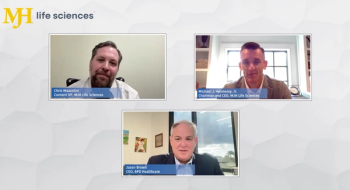
The Clinical Divide: How Ridesharing Services Can Improve Patient Outcomes
How can ridesharing services like Lyft help improve patient outcomes and save money on emergency and nonemergency transportation?
Rideshare service Lyft has been making inroads into the healthcare industry over the past few years. By providing transportation to help patients get to their medical appointments, rideshare services like Lyft have reduced no show rates and now can help assure that patients get the care that they, need when they need it. And now, the company sees patients utilizing Medicare Advantage plans as a target demographic. How can we leverage ridesharing service to improve care for Medicare patients? And how can platforms like this one help us save money on emergency and nonemergency transportation?
Welcome to The Clinical Divide. I’m Dr. Kevin Campbell. I’m a Duke-trained cardiologist and the CEO of the health data startup PaceMate. Every week, this Healthcare Analytics News™ video series examines healthcare technology and medicine’s top news. I try to bring you the views that help physicians and healthcare executives bridge the clinical divide.
In 2016, Lyft partnered with Medicare Advantage provider CareMore, a subsidiary of Anthem, to provide transportation for patients covered in the plan. In the past, the cost of getting patients to and from their appointments has been a major expenditure, and many patients were left waiting for a ride for hours, often resulting in missed appointments. Now, this partnership has led to beneficiaries’ ride costs going down by 39 percent and wait times for ride decreasing by 40 percent. Through the partnership, CareMore has booked 90 percent of nonemergency transportation through Lyft. Now, nearly one-third of Lyft passengers use the service to get a ride for medical care.
>>
With the Centers for Medicare and Medicaid Services allowing Medicare Advantage plans to offer supplemental benefits for 2019, Lyft’s platform targets senior-citizens and allows the partner insurer or provider to call a ride directly for the beneficiary. According to AARP and UnitedHealthcare, seniors with unlimited access to Lyft covered by their insurance reported a 30 percent boost in physical activity and a 90 percent increase in quality of life.
However, the rideshare news is not all good. A
While this ridesharing service collaboration has the potential to reduce costs and limit missed appointments, it is really important that we as healthcare executives and CEOs must make sure that patients are aware of its existence, its benefits and how the program works. We have to figure out how to best market these services to each subset of patients, so that everybody can benefit from this. After all, a decrease in missed appointments would certainly increase workflow and efficiency in medical systems. Most importantly, improved patient attendance with appointments and compliance is going to always result in better outcomes.
Thank you for joining me for this episode of The Clinical Divide. Until next week, I’m Dr. Kevin Campbell, for Healthcare Analytics News™.
Navigate the digital transformation with confidence.
More Episodes of The Clinical Divide:



































